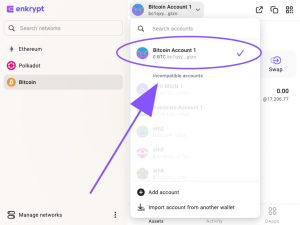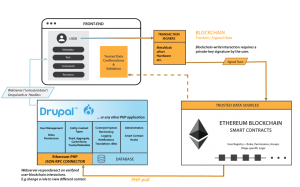Free Online Tutorials for Hands-on Learning
The digital age has democratized learning, offering unprecedented access to educational resources. Free online tutorials, in particular, have experienced explosive growth, providing a pathway to hands-on skill development for millions. This exploration delves into the effectiveness, accessibility, and future potential of these invaluable learning tools, examining various formats and addressing the challenges and opportunities they present.
From coding bootcamps to culinary classes, free online tutorials cater to a vast spectrum of interests and skill levels. This surge in popularity is driven by factors such as increased internet penetration, the affordability of online learning, and a growing demand for practical skills in a rapidly evolving job market. We will investigate the trends shaping this landscape, analyze the strengths and weaknesses of different tutorial formats, and consider the implications for both learners and the online education industry.
Popularity and Trends of Free Online Tutorials
The proliferation of free online tutorials has dramatically reshaped the landscape of education and skill development over the past decade. This readily accessible learning resource has empowered millions globally, fostering a culture of continuous learning and self-improvement. The growth trajectory is particularly noteworthy in the last five years, driven by increased internet penetration, improved mobile accessibility, and a rising demand for upskilling and reskilling in a rapidly evolving job market.The following sections delve into the specifics of this growth, exploring platform-specific trends, learning style adaptations, and the most in-demand subject areas.
Growth of Free Online Tutorials Across Platforms
The following table presents a snapshot of user growth across several prominent platforms offering free online tutorials over the past five years. Note that precise figures are often difficult to obtain due to varying reporting methodologies and the inclusion of both free and paid content on some platforms. The data presented represents estimates based on publicly available information and industry reports.
| Platform | Subject Matter Focus | Approximate User Growth (2019-2024) | Notes |
|---|---|---|---|
| YouTube | Highly diverse; strong in tech, creative arts, and educational content. | Estimated increase of 50-75% in educational channels and viewership. | Significant growth driven by ease of access and vast content library. |
| Udemy | Wide range, with a concentration in professional development and technical skills. | Estimated increase of 30-40% in free course enrollments. | Growth reflects increasing demand for skill enhancement and career advancement. |
| Coursera | Focus on university-level courses and professional certifications, with a growing free content offering. | Estimated increase of 20-30% in free course enrollments. | Growth is slower compared to YouTube and Udemy, reflecting the more formal nature of the content. |
| Khan Academy | Primarily K-12 education, with expanding content in higher education subjects. | Estimated increase of 25-35% in user engagement. | Consistent growth driven by its focus on providing high-quality educational resources for free. |
Learning Styles Catered to by Different Platforms
Free online tutorial platforms cater to diverse learning styles. YouTube, for example, excels at providing short, engaging videos suitable for visual and kinesthetic learners. Its informal nature appeals to those who prefer a less structured learning experience. Platforms like Coursera, in contrast, offer more structured courses with assessments and deadlines, catering to learners who thrive in a formal educational environment.
Udemy provides a middle ground, with a mix of structured courses and shorter, more focused tutorials. Khan Academy’s structured approach, focused explanations, and practice exercises cater well to learners who benefit from a systematic and progressive learning path.
Top Three Subject Areas with Highest Demand
The three subject areas exhibiting the highest demand for free online tutorials are: Technology (including programming, software development, and data science), Business (including marketing, finance, and management), and Creative Arts (including graphic design, music production, and video editing). This is supported by the significant growth observed in YouTube channels and Udemy courses related to these fields, as well as the high volume of searches and user engagement data across various platforms.
The demand reflects the growing importance of digital literacy, entrepreneurial aspirations, and creative pursuits in the modern world. For instance, the surge in interest in data science reflects the increasing demand for data analysts and data scientists across numerous industries. Similarly, the popularity of marketing tutorials highlights the need for businesses to adapt to the ever-changing digital landscape.
The continued popularity of creative arts tutorials reflects the widespread interest in developing creative skills for personal enrichment and professional opportunities.
Effectiveness of Hands-on Learning in Online Tutorials
Hands-on learning, the process of actively engaging with the material through practice and application, significantly enhances the effectiveness of online tutorials. Unlike passive learning methods like simply reading or watching, hands-on activities foster deeper understanding, improved retention, and the development of crucial problem-solving skills. This approach transforms theoretical knowledge into practical competence, bridging the gap between learning and application.Incorporating hands-on projects into online tutorials offers numerous benefits.
Students develop a stronger grasp of concepts by applying them directly, leading to better comprehension and retention. The process of troubleshooting and debugging during hands-on activities builds critical thinking and problem-solving skills, essential for success in many fields. Furthermore, hands-on projects provide a sense of accomplishment and motivation, encouraging continued engagement with the learning material. For example, a student learning web development through a tutorial that includes building a simple website will gain a much deeper understanding of HTML, CSS, and JavaScript than a student who only reads about these technologies.
Similarly, a student learning data analysis might benefit from a hands-on project involving cleaning and analyzing a real-world dataset, rather than just reading about statistical methods.
Challenges of Implementing Effective Hands-on Learning in a Digital Environment and Proposed Solutions
Implementing effective hands-on learning online presents certain challenges. Access to necessary tools and software can be a barrier for some students, while providing adequate support and feedback in a virtual environment requires careful planning and resource allocation. Furthermore, maintaining student engagement and motivation in a self-paced online environment can be difficult without the structure and interaction of a traditional classroom.To address these challenges, several solutions can be implemented.
Providing clear instructions and readily available resources, including links to free or affordable software and tools, can overcome access barriers. Incorporating interactive elements, such as quizzes, coding challenges, and collaborative projects, can enhance engagement. Regular feedback mechanisms, such as peer review, automated grading systems, and opportunities for instructor interaction, are crucial for providing support and guidance. Finally, structuring the hands-on projects with clear milestones and deadlines can help students stay on track and maintain motivation.
Designing a Hands-on Project: Building a Simple Website
This section details the steps involved in designing a hands-on project focused on building a simple website using HTML and CSS. The project aims to provide a practical application of these fundamental web development technologies.
- Define Project Scope: Decide on the website’s purpose and basic structure. For instance, a simple portfolio website showcasing personal projects or a basic informational site about a chosen topic.
- Content Planning: Artikel the website’s content, including text, images, and any other multimedia elements. This includes determining the number of pages and their respective content.
- HTML Structure: Create the basic HTML structure of the website, including the header, navigation, main content area, and footer. This involves using appropriate HTML tags to define different sections of the website.
- CSS Styling: Use CSS to style the website’s appearance. This involves defining the layout, colors, fonts, and other visual aspects of the website. Students can experiment with different CSS properties to achieve their desired design.
- Content Integration: Integrate the planned content into the HTML structure, ensuring that the content is appropriately formatted and styled using CSS. This step involves adding text, images, and other elements to the website.
- Testing and Refinement: Thoroughly test the website in different browsers to ensure it renders correctly and functions as intended. Refine the design and content based on testing results and feedback.
- Deployment (Optional): Deploy the completed website to a hosting platform (like GitHub Pages or Netlify) to make it accessible online. This step is optional but highly recommended to showcase the completed project.
Types and Formats of Free Online Tutorials
Free online tutorials are available in a wide variety of formats, each catering to different learning styles and preferences. The choice of format significantly impacts the effectiveness of hands-on learning, influencing engagement, comprehension, and the overall learning experience. Understanding these formats and their respective strengths and weaknesses is crucial for both creators and learners of online tutorials.
The format of a tutorial directly affects its accessibility and the level of engagement it can achieve. For example, a purely textual tutorial might be ideal for learners who prefer a structured, detailed approach, while a video tutorial might better suit visual learners who benefit from demonstrations. The best format often depends on the complexity of the subject matter and the learning goals.
Diverse Tutorial Formats for Hands-on Learning
The following table categorizes and describes several common formats used in free online tutorials, highlighting their diverse approaches to hands-on learning.
| Format | Description | Example |
|---|---|---|
| Video Lectures | These tutorials use video recordings of instructors demonstrating techniques or explaining concepts. They often incorporate screen recordings to show software usage or practical applications. | A YouTube video demonstrating how to code a simple website using HTML and CSS, with the instructor’s screen showing the code editor and the resulting webpage. |
| Interactive Exercises | These tutorials embed interactive elements within the learning experience, allowing learners to practice skills immediately. This could involve coding challenges, quizzes, or simulations. | An online platform where learners practice coding by completing small programming tasks with immediate feedback on their code’s correctness. |
| Downloadable Resources | These tutorials provide downloadable materials like PDFs, templates, or code snippets that learners can use to practice independently. This format allows for offline learning and self-paced practice. | A PDF document containing a step-by-step guide on creating a marketing plan, along with downloadable templates for each section of the plan. |
| Interactive Simulations | These tutorials use simulations to allow learners to experiment in a safe, virtual environment. This is particularly useful for learning complex processes or handling sensitive equipment. | A virtual lab environment allowing learners to simulate electrical circuits without the need for physical components. |
| Text-Based Tutorials with Screenshots | These tutorials use a combination of written instructions and screenshots to guide learners through a process. This format is suitable for both visual and textual learners. | A website with a step-by-step guide on using a specific software program, each step illustrated with clear screenshots. |
Strengths and Weaknesses of Different Tutorial Formats
Each tutorial format possesses unique strengths and weaknesses concerning hands-on learning. Understanding these aspects helps in selecting the most suitable format for specific learning objectives and audience preferences.
For instance, video lectures excel at demonstrating complex procedures visually but may lack interactivity. Interactive exercises, while highly engaging, might require a strong internet connection and may not cater to all learning styles. Downloadable resources offer flexibility but require self-discipline and may lack immediate feedback.
Hypothetical Free Online Tutorial: Introduction to Digital Photography
This hypothetical tutorial aims to teach basic digital photography skills to beginners. The learning objectives include understanding camera settings, mastering composition techniques, and editing basic photographs.
Structure: The tutorial would be structured into modules, each covering a specific aspect of digital photography. Each module would consist of a video lecture, interactive exercises (quizzes and image editing tasks), and downloadable resources (checklists and editing templates).
Content: Modules would cover topics such as understanding aperture, shutter speed, and ISO; composition rules (rule of thirds, leading lines); basic photo editing techniques using free software like GIMP; and a final project where learners create a photo series based on a chosen theme.
Learning Objectives: Upon completion, learners should be able to confidently operate a digital camera, apply basic composition techniques, and edit their photos using free software. They should also be able to create a cohesive photo series showcasing their newfound skills.
Accessibility and Inclusivity in Free Online Tutorials
Creating accessible and inclusive free online tutorials is crucial for ensuring equitable access to education and skill development. A well-designed tutorial considers the needs of diverse learners, including those with disabilities, and removes barriers to participation. This promotes broader engagement and fosters a more inclusive learning environment.Accessibility features significantly enhance the learning experience for everyone, not just individuals with disabilities.
For instance, captions benefit learners with hearing impairments, while screen readers assist visually impaired learners. These features also aid learners in noisy environments or those who prefer to learn at their own pace by reviewing transcripts. Inclusive design practices go beyond simply adding features; they involve a fundamental shift in how tutorials are conceived and developed, prioritizing user experience for all.
Accessibility Features in Online Tutorials
Providing comprehensive accessibility features is paramount for ensuring inclusivity. Subtitles and transcripts offer crucial support for individuals with hearing impairments or those who prefer to read along. Alternative text (alt text) for images conveys visual information to screen reader users, describing the image’s content and purpose within the tutorial. Color contrast should be sufficient to ensure readability for individuals with visual impairments.
Keyboard navigation should be fully functional, enabling users to navigate the tutorial without relying on a mouse. Consider using descriptive language and avoiding jargon, to make the tutorials understandable for all. For example, instead of using technical terms like “MPEG-4”, one can use plain language like “video file”. The use of clear and consistent language, avoiding ambiguous terminology, benefits all learners.
Inclusive Practices in Online Tutorial Design
Inclusive practices go beyond adding accessibility features; they involve designing tutorials with diverse learners in mind from the outset. This includes offering multiple formats for content delivery, such as videos with transcripts, downloadable PDFs, and interactive exercises. Providing clear and concise instructions, breaking down complex information into smaller, manageable chunks, and offering different levels of difficulty cater to various learning styles and abilities.
Consider using a variety of multimedia elements, such as animations, simulations, and interactive quizzes, to engage learners with diverse learning preferences. For instance, a tutorial on coding could offer video demonstrations alongside written explanations and interactive coding exercises. Furthermore, providing opportunities for learner interaction, such as discussion forums or Q&A sections, fosters a sense of community and allows for personalized support.
Strategies for Creating Accessible Online Tutorials
Creating accessible tutorials requires a proactive approach throughout the design and development process. First, use authoring tools that support accessibility features, such as those compliant with WCAG (Web Content Accessibility Guidelines). Secondly, thoroughly test the tutorial with assistive technologies, such as screen readers and speech-to-text software, to identify and rectify any accessibility barriers. Thirdly, involve individuals with disabilities in the design and testing phases to gain valuable insights and ensure that the tutorial meets their needs.
This feedback is invaluable in identifying areas that might not be immediately apparent to developers without lived experience. Finally, provide clear and concise instructions on how to use the accessibility features, ensuring that all learners can benefit from them. For example, clearly indicate where to find transcripts or how to activate keyboard navigation. Regularly review and update the tutorials to maintain accessibility standards and incorporate user feedback.
This iterative approach ensures that the tutorials remain inclusive and meet the evolving needs of diverse learners.
The Future of Free Online Tutorials and Online Business in 2025
Free online tutorials have already revolutionized access to education and skill development. Looking ahead to 2025, we can anticipate even more significant changes driven by technological advancements and evolving learning preferences. The integration of immersive technologies and the continued growth of the online learning market will reshape the landscape of both free tutorials and the businesses that support them.The evolution of free online tutorials in the coming years will be heavily influenced by technological advancements and shifts in learning trends.
We expect to see a rise in personalized learning experiences, leveraging AI to tailor content and pace to individual needs. Microlearning, focusing on short, focused modules, will likely gain further traction, catering to busy learners with limited time. Furthermore, the demand for interactive and engaging content will continue to grow, pushing creators to incorporate more multimedia elements and gamification techniques.
Platforms will become more sophisticated in their ability to track learner progress and provide personalized feedback, enhancing the overall learning experience.
Integration of VR and AR in Free Online Tutorials
Virtual and augmented reality technologies offer immense potential for enhancing the effectiveness of free online tutorials. VR could create immersive simulations, allowing learners to practice skills in realistic virtual environments. Imagine a free coding tutorial where students can build a virtual website within a 3D environment, receiving immediate feedback on their code. Similarly, AR could overlay digital information onto the real world, providing step-by-step instructions for tasks like fixing a bicycle or assembling furniture.
For example, an AR app could guide a user through the process of changing a tire, showing animated overlays on their actual car tire to demonstrate each step. This hands-on, interactive approach could significantly improve learning outcomes and engagement.
Impact of Free Online Tutorials on the Online Business Landscape in 2025
By 2025, free online tutorials will likely play a crucial role in shaping the online business landscape. Businesses can leverage free tutorials to attract customers, build brand awareness, and generate leads. One model involves offering a series of free introductory tutorials, followed by a premium subscription for more advanced content or personalized coaching. Another model could involve integrating free tutorials into a broader e-commerce platform, offering valuable educational content alongside product sales.
For instance, a company selling photography equipment might offer free tutorials on basic photography techniques, driving traffic to their website and encouraging purchases of their products. Furthermore, the rise of online learning platforms that incorporate both free and paid content will continue to flourish, creating a hybrid model that benefits both learners and businesses. This could include platforms offering free introductory courses, then upselling premium content, expert coaching, or certifications.
The success of such models will depend on providing high-quality, engaging content and effectively targeting the right audience.
Conclusion
Free online tutorials for hands-on learning represent a powerful force in modern education, offering accessible and engaging pathways to skill development. While challenges remain in ensuring inclusivity and maintaining quality, the potential for growth and innovation is immense. As technology continues to evolve, we can anticipate even more immersive and personalized learning experiences, further empowering individuals to acquire valuable skills and pursue their educational goals.
The future of learning is increasingly online, and free, hands-on tutorials are at the forefront of this exciting transformation.
FAQs
What are the best platforms for finding free online tutorials?
Popular platforms include YouTube, Coursera, edX, Udemy, and Khan Academy, each offering diverse content and formats.
How can I ensure I’m learning effectively from free online tutorials?
Active participation, consistent practice, seeking feedback, and supplementing learning with additional resources are key to effective learning.
Are free online tutorials suitable for all learning styles?
While many tutorials cater to diverse styles, some learners may benefit from supplementing them with additional resources or learning communities.
What are the limitations of free online tutorials?
Limitations can include lack of personalized feedback, potential for outdated information, and the need for self-discipline and motivation.



